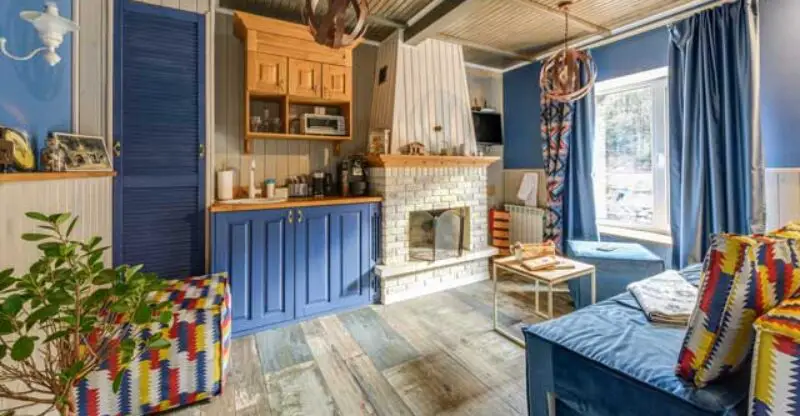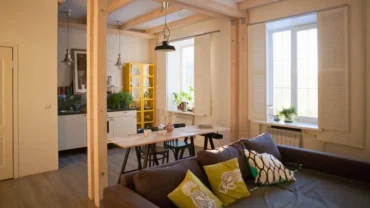How Much Value Does a Pantry Add to Your Home?
A pantry is a highly sought-after feature in many homes. Not only does it provide ample storage space for food and kitchen supplies, but it can also add value to a home. Homeowners looking to increase the value of their homes may be wondering just how much value a pantry can add.
According to Kitchen Seer, a pantry or butler’s pantry can add anywhere from 50-75% of what you spent to build it to the value of your home. This means that investing in a pantry can be a smart financial decision if you plan to sell your home in the future.
However, the cost of adding a pantry can vary greatly depending on the size, materials, and complexity of the installation. Additionally, a well-designed pantry can be a major selling point, especially if it includes features such as custom shelving, lighting, and organization systems.
By carefully considering these factors, homeowners can make an informed decision about whether adding a pantry is a worthwhile investment for their home.
Cost of Adding a Pantry
It is important to consider the associated costs and budget accordingly:
Materials and Labor Costs
Adding a pantry to your home can be a great investment, but it’s important to consider the costs before starting the project. According to HomeAdvisor, the cost to build a pantry ranges from $750 to $3,500 for a walk-in pantry, and $250 to $1,500 for a reach-in pantry.
The costs can vary depending on the size, location, and materials used for the project. One of the biggest factors affecting the cost of adding a pantry is the materials used.
High-end materials such as hardwood doors and custom shelving can significantly increase the cost of the project. On the other hand, using less expensive materials such as wire shelving and basic cabinetry can help keep costs down.
The labor costs for adding a pantry can also vary depending on the complexity of the project. Hiring a professional contractor can ensure that the job is done correctly and efficiently, but it can also add to the overall cost of the project.
ROI and Home Value
Adding a pantry to your home can not only provide added convenience and storage space, but it can also increase the value of your home. According to a report by the National Association of Home Builders, 85% of home buyers consider a kitchen pantry to be essential or desirable.
The return on investment (ROI) for adding a pantry to your home can vary depending on the location and quality of the project. However, in general, adding a pantry can provide a return on investment of up to 70%, making it a worthwhile investment for homeowners.
When considering adding a pantry to your home, it’s important to keep in mind the potential increase in home value and the added convenience it can provide. By using quality materials and hiring a professional contractor, you can ensure that the project is done correctly and efficiently, maximizing the potential ROI.
Benefits of a Pantry
A pantry is a separate room or closet that is used for storing food, dishes, and other kitchen items. It is a popular feature in modern homes, and it offers several benefits to homeowners. In this section, we will discuss some of the benefits of having a pantry in your home.
Increased Storage Space
One of the most significant benefits of having a pantry is the increased storage space it provides. A pantry allows you to store all your food items and kitchen supplies in one place, which makes it easier to find what you need when you need it.
With a pantry, you can store items that you don’t use frequently, such as holiday dishes or bulk food items, without taking up valuable cabinet or counter space in your kitchen.
According to This Old House, 85 percent of home buyers consider a kitchen pantry “essential” or “desirable.” This means that having a pantry can add value to your home and make it more attractive to potential buyers.
Improved Organization
A pantry can also help you keep your kitchen organized. With a pantry, you can store similar items together, making it easier to find what you need.
For example, you can store all your baking supplies, such as flour, sugar, and baking soda, on one shelf, and all your canned goods on another shelf. This makes it easier to see what you have and what you need to buy when you go grocery shopping.
With a pantry, you can store all these items out of sight, making your kitchen look neater and more organized.
Reduced Food Waste
A pantry can also help you reduce food waste. With a pantry, you can store perishable items, such as fruits and vegetables, in a cool, dry place, which can help them last longer.
Additionally, you can store dry goods, such as pasta and rice, in airtight containers, which can help prevent them from going stale or attracting pests.
Types of Pantry Designs
When it comes to designing a pantry, there are several options to choose from. Each design has its unique features and benefits, and the choice ultimately depends on personal preference and available space. Here are three popular types of pantry designs:
Walk-In Pantries
Walk-in pantries are a popular choice for homeowners who have ample space and want to maximize their storage options.
These pantries typically have a door and are designed to be a separate room or closet. They are ideal for storing large items, such as bulk food items, small appliances, and cookware.
A walk-in pantry can also be designed with custom shelving and lighting to create a functional and organized space.
Butler’s Pantries
A butler’s pantry is a smaller, more compact version of a walk-in pantry. It is typically located between the kitchen and dining room and is designed to be a serving area for entertaining guests.
A butler’s pantry is ideal for storing and displaying fine China, glassware, and silverware. It can also be designed with a sink, refrigerator, and wine cooler for added convenience.
Reach-In Pantries
Reach-in pantries are a great option for homeowners who have limited space. These pantries are typically designed as a closet or cabinets with shelves and drawers for storage.
They are ideal for storing dry goods, canned goods, and snacks. Reach-in pantries can also be designed with custom shelving and pull-out drawers to maximize storage space.
What is a Decent Size Pantry?
A pantry can range in size from a small closet to a large walk-in room. The size of a pantry depends on the available space and the needs of the homeowner. Generally, a decent size pantry should be between 8 and 12 feet wide and 4 to 8 feet deep.
If there is more than one person in the household, it is recommended to make the pantry at least 6 feet wide and 4 feet deep. This size will provide enough space to store food, kitchen appliances, and other items.
It is important to note that the size of the pantry should not be too large or too small. A pantry that is too small will not provide enough storage space, while a pantry that is too large can be difficult to organize and maintain.
When planning the size of the pantry, it is important to consider the needs of the household. For example, a family that cooks frequently may need a larger pantry to store more food and kitchen appliances.
Overall, a decent size pantry should provide enough storage space for the household’s needs without being too large or too small.
Factors to Consider
When considering adding a pantry to your home, there are several factors to consider:
Available Space
The amount of space available in your home will be a major factor in determining whether or not a pantry is a feasible addition.
If you have a small kitchen, you may not have enough room to add a walk-in pantry. However, even a small closet or shelving unit can be converted into a pantry with the right planning and organization.
It’s important to consider the location of your pantry as well. If you have a basement or unused room nearby, this could be a great location for a pantry. However, if your pantry is too far from the kitchen, it may be less convenient to use daily.
Kitchen Layout
The layout of your kitchen will also play a role in determining the type of pantry that will work best for you. If you have a large, open kitchen, a walk-in pantry may be a great addition.
However, if your kitchen is more compact, you may need to consider other options such as a pull-out pantry or pantry cabinet.
It’s also important to consider the flow of your kitchen when planning your pantry. You want to make sure that your pantry is easily accessible and that it doesn’t disrupt the overall flow of your kitchen.
Lifestyle and Cooking Habits
Your lifestyle and cooking habits will also play a role in determining the type of pantry that will work best for you. If you enjoy cooking and frequently use a wide variety of ingredients, you may need a larger pantry to store all of your supplies.
On the other hand, if you tend to cook simple meals with just a few ingredients, a smaller pantry may be sufficient.
It’s also important to consider the types of items you will be stored in your pantry. If you plan to store heavy items such as cans and bottles, you will need sturdy shelves that can support the weight.
Conclusion
Having a pantry in your home can add significant value both in terms of convenience and monetary value. It is a highly desirable feature for potential buyers and can increase the appeal and overall value of your home.
We hope that the information provided in this blog post has helped address your concerns about adding a pantry to your home. We encourage you to start planning and exploring your options to create a space that will benefit you now and in the future.
FAQs
Yes, having a pantry is worth it. It provides extra storage for food, helps with organization, and can save you money by allowing you to stock up on items when they’re on sale.
A pantry is a storage area used for storing food and kitchen supplies, typically located off the kitchen. A butler’s pantry is a separate area, often with a sink, that is used for food preparation and storage, as well as entertaining guests.
To build a DIY pantry, you can follow these general steps: 1) Plan the pantry’s location and size, 2) Frame out the space with studs and drywall, 3) Install shelves, 4) Add doors, and 5) Paint or finish the pantry to match the surrounding decor.



